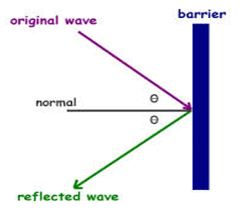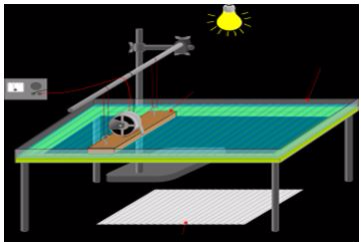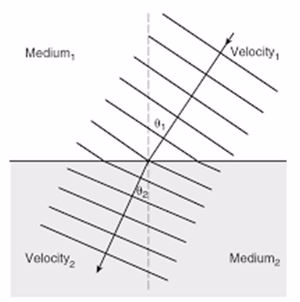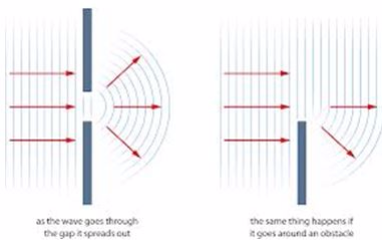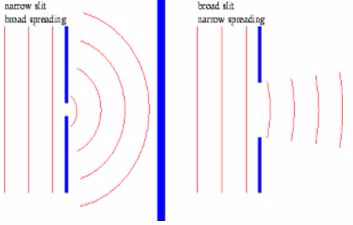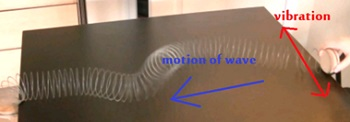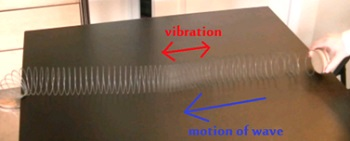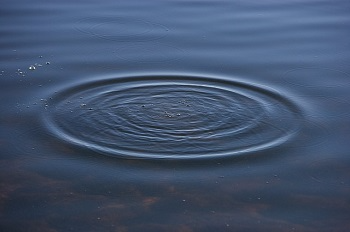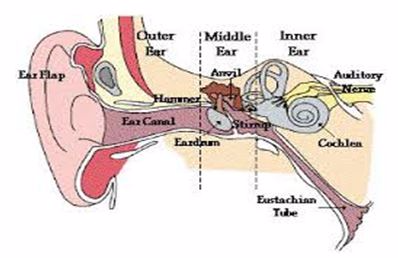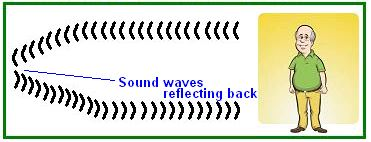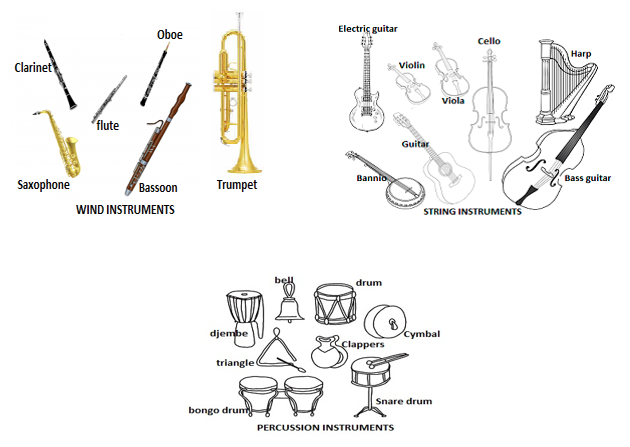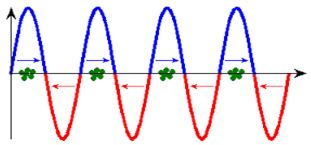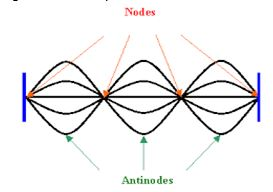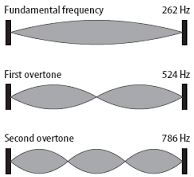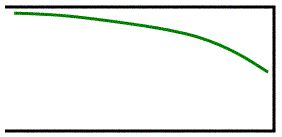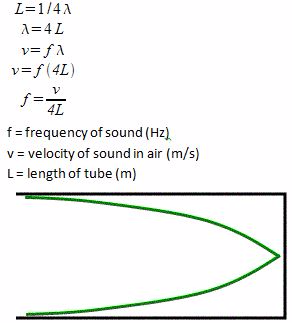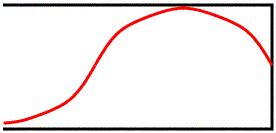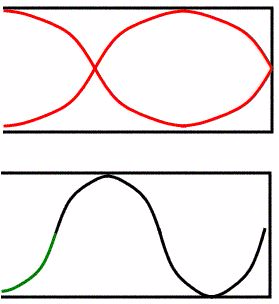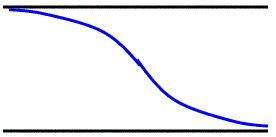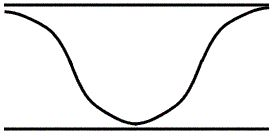JOIN US WHATSAPP
CLICK HERE
JOIN US TELEGRAM
CLICK HERE
topic 1: WAVES
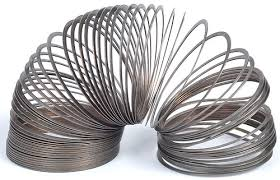
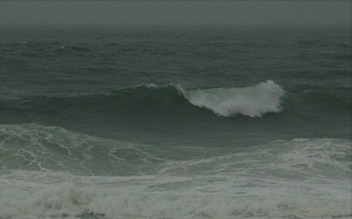
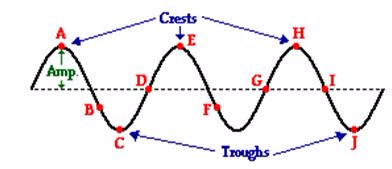
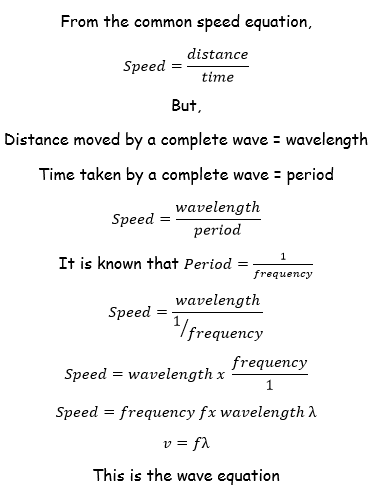
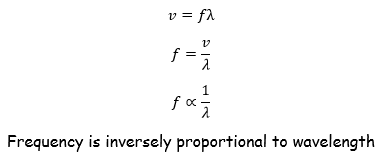
Introduction to Waves
The Concept of Wave
Explain the concept of a wave
A wave is a disturbance that travels through a medium from one location to another location.
Waves are classified into;
- transverse waves: Waves which have their direction of motion perpendicular to the vibration of the particles e.g water waves.
- longitudinal waves: Waves have their direction of motion parallel to the direction of the vibration of the particles e.g sound waves.
Consider a slinky wave as an example of a wave. When the slinky is stretched from end to end and is held at rest, it assumes a natural position known as the equilibrium or rest position.

A slinky
The coils of the slinky naturally assume this position, spaced equally far apart. To introduce a wave into the slinky, the first particle is displaced or moved from its equilibrium or rest position. The particle might be moved upwards or downwards, forwards or backwards; but once moved, it is returned to its original equilibrium or rest position.
The act of moving the first coil of the slinky in a given direction and then returning it to its equilibrium position creates a disturbance in the slinky. We can then observe this disturbance moving through the slinky from one end to the other. If the first coil of the slinky is given a single back-and-forth vibration, then we call the observed motion of the disturbance through the slinky a slinky pulse.
A pulse is a single disturbance moving through a medium from one location to another location.
However, if the first coil of the slinky is continuously and periodically vibrated in a back-and-forth manner, we would observe a repeating disturbance moving within the slinky that endures over some prolonged period of time. The repeating and periodic disturbance that moves through a medium from one location to another is referred to as a wave.
A medium is a substance or material that carries the wave.
You have perhaps heard of the phrase news media. The news media refers to the various institutions (newspaper offices, television stations, radio stations, etc.) within our society that carry the news from one location to another. The news moves through the media.
The wave medium is not the wave and it doesn’t make the wave; it merely carries or transports the wave from its source to other locations.
In the case of our slinky wave, the medium through that the wave travels is the slinky coils. In the case of a water wave in the ocean, the medium through which the wave travels is the ocean water. In the case of a sound wave moving from the church choir to the pews, the medium through which the sound wave travels is the air in the room.

Ocean water as the medium for water waves
The Terms Wave Length, Frequency and Velocity of a Wave
Explain the terms wave length, frequency and velocity of a wave
Consider the transverse wave below:

- A transverse wave is a wave in which the particles of the medium are displaced in a direction perpendicular to the direction of energy transport.
- The crest of a wave is the point on the medium that exhibits the maximum amount of positive or upward displacement from the rest position.
- The trough of a wave is the point on the medium that exhibits the maximum amount of negative or downward displacement from the rest position.
- The amplitude of a wave refers to the maximum amount of displacement of a particle on the medium from its rest position. In a sense, the amplitude is the distance from rest to crest. Similarly, the amplitude can be measured from the rest position to the trough position.
- The wavelength of a wave is simply the length of one complete wave cycle. If you were to trace your finger across the wave in the diagram above, you would notice that your finger repeats its path. A wave is a repeating pattern. It repeats itself in a periodic and regular fashion over both time and space. And the length of one such spatial repetition (known as a wave cycle) is the wavelength. The wavelength can be measured as the distance from crest to crest or from trough to trough. In fact, the wavelength of a wave can be measured as the distance from a point on a wave to the corresponding point on the next cycle of the wave.
- A longitudinal wave is a wave in which the particles of the medium are displaced in a direction parallel to the direction of energy transport. A longitudinal wave can be created in a slinky if the slinky is stretched out horizontally and the end coil is vibrated back-and-forth in a horizontal direction.
- A compression is a region in the longitudinal waves where the wave particles are closest to each other. It is a high pressure region and characterized by high concentration of wave particles.
- A rarefaction is the opposite of compression. It is region where wave particles are far apart from each other. it is a low pressure region.
- The frequency, (f) of a wave refers to how often the particles of the medium vibrate when a wave passes through the medium. It the number of waves/oscillations passing a point per second. Given this definition, it is reasonable that the quantity frequency would have units of cycles/second, waves/second, vibrations/second, or something/second. The SI unit for frequency is the Hertz(abbreviated Hz) where 1 Hz is equivalent to 1 cycle/second.
- Period, (T) refers to the time that it takes to do something. When an event occurs repeatedly, then we say that the event is periodic and refer to the time for the event to repeat itself as the period. The period of a wave is the time for a particle on a medium to make one complete cycle (oscillation). Period, being a time, is measured in units of time such as seconds, hours, days or years. The period of orbit for the Earth around the Sun is approximately 365 days; it takes 365 days for the Earth to complete a cycle.
- The speed of an object refers to how fast an object is moving and is usually expressed as the distance traveled per time of travel. In the case of a wave, the speed is the distance traveled by a given point on the wave (such as a crest) in a given interval of time.The SI unit of speed is m/s.
Wave equation
The wave equation shows the relationship between speed, wavelength and frequency of a wave.
Previously we have seen that a distance covered by a complete wave is known as wavelengthof a wave. Likewise, the time taken by a wave to complete its oscillation is known as the period.

Generally, the above equation tells us about the relationship between the speed v, wavelengthλand frequency fof a wave. Another important point to note is if speed of the wave is constant then frequency of the wave is inversely proportional to the wavelength.

The above equation tells us that, the increase in frequency of the wave makes the wavelength to be decreased and the decrease in frequency causes the increase in wavelength. This means, high frequency waves have shorter wavelengths and longer waves have low frequencies.
Types of Waves
Identify types of waves
Previously we classified the waves by considering the movement of the particles. And now you’re going to find out the 2 types of waves according to the media of propagation.
- Mechanical Waves
- Electromagnetic Waves
Mechanical Waves
Mechanical waves are also called elastic waves as their propagation depends on the elastic properties of the medium through which the waves pass
Mechanical waves are divided into three categories: Transverse waves, longitudinal waves, and surface waves. In transverse waves, the medium moves perpendicular to the wave direction, and in longitudinal waves, the medium moves parallel to the wave direction.
In surface waves, both transverse and longitudinal waves mix in a single medium. In very simple words, an electronic wave is that which travels in a vacuum, and a mechanical wave is that which needs some medium for traveling.
Examples of mechanical waves are Sound waves, Water waves , Ocean waves, Earth quake waves, Seismic waves
Electromagnetic Waves
Electromagnetic waves are waves that have no medium to travel whereas mechanical waves need a medium for its transmission. Examples of electromagnetic waves include light, x-rays, gamma rays and radio signals.
The following are the differences between mechanical and electromagnetic waves.
- Electromagnetic waves travel in a vacuum whereas mechanical waves do not.
- The mechanical waves need a medium like water, air, or anything for it to travel.
- While an electromagnetic wave is called just a disturbance, a mechanical wave is considered a periodic disturbance.
Behaviour of Waves
Propagation of Waves
Sound Waves
Musical Sound
ElectroMagnetic Spectrum
Application of ElectroMagnetic Wave in daily life




